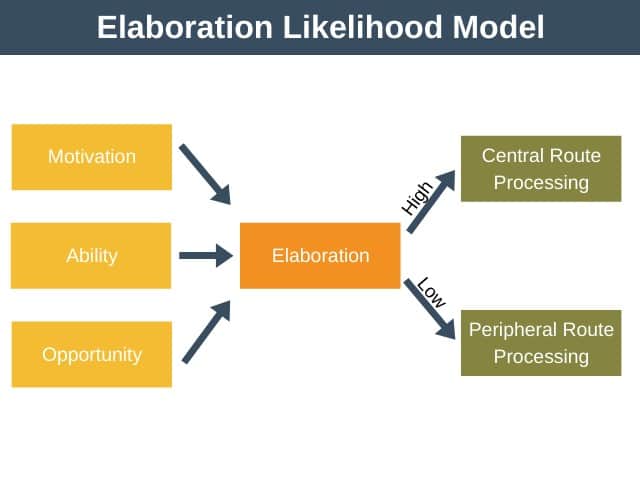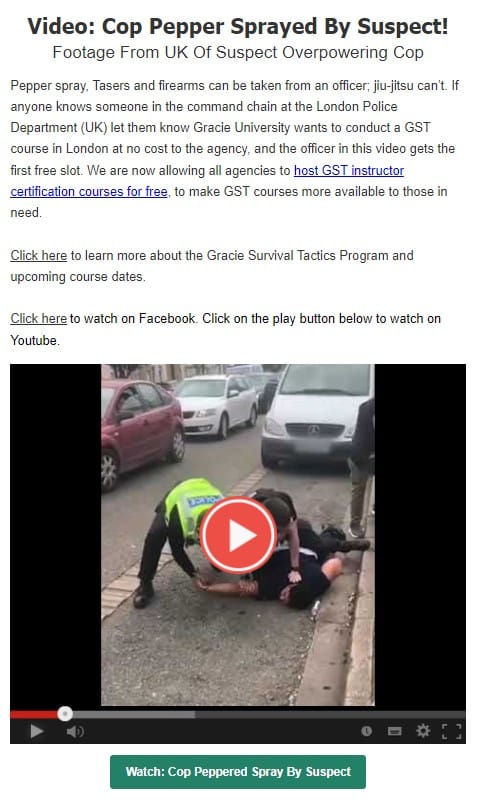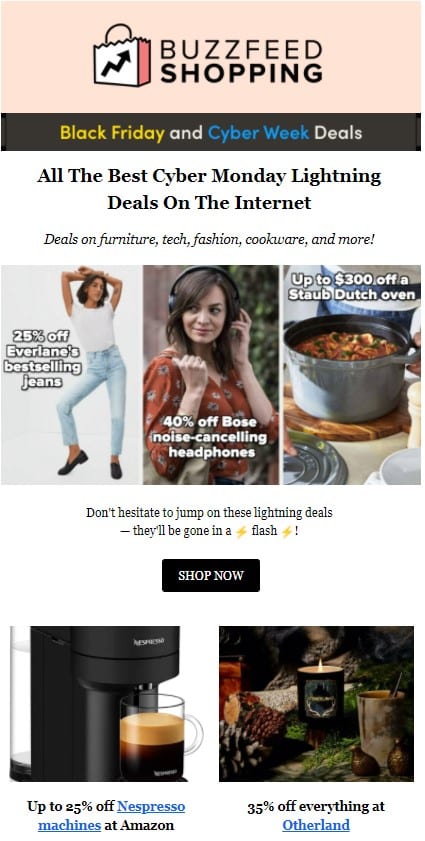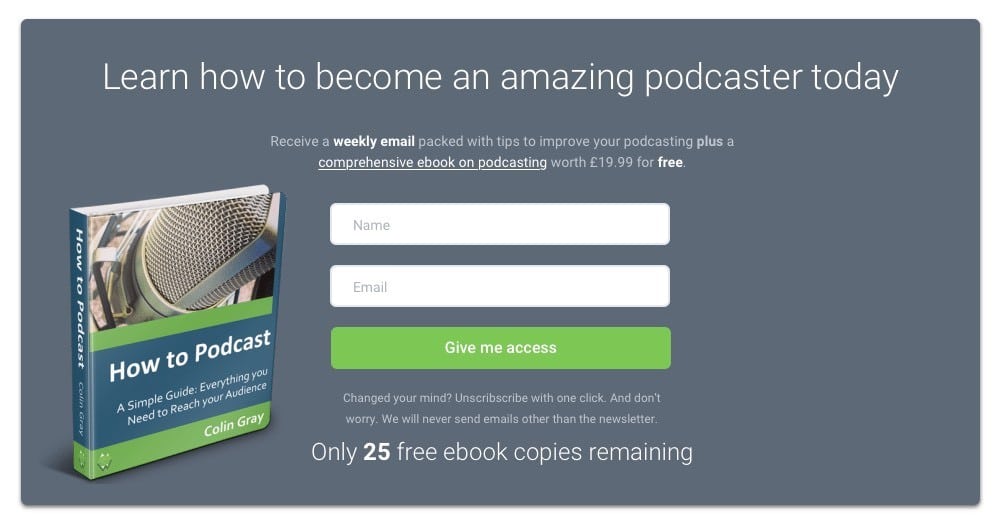
6 Marketing Theories You Can Use in Your Emails
Email marketing is a potent conversion tool. But it’s one of the most personal marketing mediums, so it’s crucial that you hit the right pain points. Nicholas Rubright of Writer shows you how some of the most effective marketing theories will help you nail your campaigns.
Countless studies have analyzed the complexities of the human mind and have obtained data on how we can tap into it to get the desired outcome.
Incorporating these theories into your marketing will increase your conversion rates and rub our audience the right way so that you don’t end up in their unfollow list.
Marketing theories to help you boost email ROI
Here are six marketing theories you can start using in your emails to boost clicks and long-term engagement.
#1. Maslow’s hierarchy of needs
According to Abraham Maslow, we have five categories of needs:
- Physiological needs (i.e., basic needs such as food, water, shelter)
- Safety needs (i.e., security, protection, assurance)
- Belongingness needs (i.e., friends, family, community)
- Esteem needs (i.e., self-esteem, respect, confidence)
- Self-actualization needs [living according to one’s full potential (Maslow, 1943)]
Maslow’s Hierarchy of Needs theory attempts to answer philosophical questions such as “What are we after?” and “What is the meaning of life?” It unearths the deep, complex desires of our primitive minds and breaks the notion that we exist only to survive.
The theory tackles the human need outside of putting food on the table and paying bills. Maslow reveals that humans also need to belong, feel safe, and reach their full potential in life. These are our more complex needs.

When applying this principle as an email marketing theory, showcasing how your brand can fulfill physiological needs is not enough. You need to tap into your audience’s other needs, as well.
In your email campaign, you can use a conversational tone and occasionally thank your loyal customers and make them feel like they belong in a community.
Or, if you’re an eCommerce selling clothes, you may use clever marketing copy such as “Stand Out from the Rest with our New Winter Line!” to address customers’ esteem needs. Simply telling your customers that you keep their personal information secure will address their safety needs.
A single email need not target all of these needs simultaneously. But your entire email drip campaign should at least tap into all of these needs for optimal customer conversion.
#2. The theorem of consistency
Here’s one of the easier email marketing theories you’ll come across in this article. From the name itself, the theorem of consistency emphasizes coherent messaging.
When faced with uncertainty, customers would more likely opt out of something than commit and see what happens.
It gives people an uneasy feeling when one email says that eggs are good while another says eggs are rotten. The two emails contradict each other, and the recipient ends up getting confused.

The theory of consistency states that when people are faced with two opposing beliefs or actions, they’ll try to fix the inconsistency by re-aligning one of their beliefs.
This email marketing theory places importance on consistency.
For example, a tailor who says fabric is important, but always gets cheap fabric for their goods may either:
- change their views on what really is important in clothes, or
- get better fabric from more premium suppliers.
So, what’s the moral of the story?
The pieces of your email marketing campaigns should be in line with each other. Also, look at your campaigns and compare them to the rest of your marketing collateral.
You can’t have your billboard say “Shop Premium Quality Fabric Now!” and your emails say, “Fabric isn’t important at all. Style is.”

Here’s an example from Zalora. The screenshots above are from two different newsletters. The one on the left is from a newsletter about date night style tips, while the one on the right is from an email about casual styles. Zalora highlighted using a second layer for outfits in both these emails, which is consistent with their claim that jackets are a good thing.
When your marketing messaging is consistent, your audience will think that your brand has consistent values and beliefs.
#3. The elaboration likelihood model
The elaboration likelihood model is one of the more complex email marketing theories. But if you understand it, you can create better email campaigns.
First described by Richard E. Petty and John Cacioppo in 1980, this theory states that the amount of elaboration – meaning the conscious thought before an action – will influence customers’ buying decisions.
There are two main types of thought processing customers go through before making a purchase.
- Central Route Processing (High elaboration)
- Peripheral Route Processing (Low elaboration)

Let’s pretend you’re in the process of getting a new laptop. Suppose you go through lengthy research to understand the components that make up a laptop. You use factors such as throughput or processing speed to make a decision. In that case, you’re exercising your central route processing skills.
However, if your laptop-buying decision is based on factors such as celebrity endorsements, price, or buyer reviews, then that’s peripheral route processing.
That isn’t necessarily a negative thing. We tend to use peripheral route processing more often because we need to make quick decisions.
Now, how do you apply elaboration likelihood in email marketing?
You must feed potential customers the information they need to push them to purchase from your company when they’re taking the central route processing option.
Also, you should stimulate an impulse-buying decision by using enticing imagery.

Editorial newsletters from Gracie University—a leading martial arts school—break down viral fight videos and educate the recipient about essential survival tactics. This central route processing technique gives prospects a deeper understanding of the type of education the school can provide, prompting them to sign up for their training courses.

Related: 20 Actionable eCommerce Hacks to Increase Your Conversion Rates
On the other hand, email marketers can also harp on peripheral route processing. When you use FOMO on an upcoming sale, people will be hasty and have less time to research. As a result, once they see an email with a limited-time sale, the announcement of the sale may push them to buy. In the example above, Wix promoted a 50% off sale after they sent the email.
While the two approaches seem like direct opposites, they’re not mutually exclusive. Depending on your audience research results, you can mix and match them as needed.
#4. The theory of analysis paralysis
Choices are nice. But too many of them can lead to behavioral paralysis. So, you’re more likely to be content with ice cream from a parlor with a few flavor options than from one with a ton of flavors and toppings.
The reason behind this is that when you’re presented with too many options, you’ll end up overanalyzing what you want to try. In the end, you’re left more anxious about not trying the other options than being happy with the one you went with.
Now, apply this to email marketing. In your newsletters, you should:
- Limit the number of CTAs you have per email.
- Don’t cluster a ton of catalog choices on your email.
- Keep your messaging to the point. What you say shouldn’t be subject to interpretation. If you have to look into how to improve your writing, do so. Before you hit send, always check for grammar.
The newsletter from BuzzFeed Shopping below observes all three rules above:

Be clear with your CTAs. What specific actions do you want people to take? Limit it to one per email campaign piece. That way, your subscribers won’t be all over the place wondering what you want them to do. Just look at this Buzzfeed example. The “Shop Now” button appears just once in the email.
In addition, don’t highlight too many products when you send product recommendation newsletters. In the example above, BuzzFeed recommends just a handful of products. Having fewer options will boost your conversion rate as the user will have an easier time choosing the item they prefer.
Overanalysis doesn’t only arise when you ask your audience to choose from a wide variety of options. An unclear message may also trigger it. So, keep things simple. Have one message objective per email campaign.
Related: See the most prominent conversion rate optimization tools
#5. The theory of reciprocity
This is the science behind the “I owe you” phrase. The theory of reciprocity highlights a transactional relationship between two parties. When someone does another a favor, the person who receives the favor is likely to feel indebted to return the favor down the road.
So, for instance, to get people to subscribe to your email list, you’d have to offer a lead magnet (i.e., free e-book, free course, discount coupon). That is an effective email marketing theory since it warms your leads up to you as a brand.

You shouldn’t stop there, though. You have to do your leads “a favor” by sending them one or more of the following:
- Informational Newsletters (i.e., newsletter showing fashion tips)
- Occasional Discount Coupons (i.e., Christmas discount coupons)
- Little Freebies for an Action (i.e., free socks for downloading an app)
- Free E-book
- Free Online Course
- Promo Codes
Continue to engage even your regular customers with your shop through your emails. Send a little “thank you” note for every receipt, give them a list of recommendations based on what they’ve browsed, or give them a generous discount on their next purchase.
Once they’ve warmed up to you, they’ll be more likely to buy from you.
#6. The mere-exposure effect
This theory explains why we’re more likely to do something for our friends and family than for total strangers.
We are more likely to look favorably at things we’re familiar with. All you need is exposure to that one thing. You don’t even have to have a full-blown conversation with a person, for example, for the mere-exposure effect to, well, take effect.
So, how do you apply this email marketing theory?
Observe the following in your email marketing campaigns:
- Send emails regularly without being spammy.
- Use familiar words and be conversational with your subject line.
- Explain industry terms to your recipients so they’ll understand what you’re trying to say.

If you appear regularly in someone’s inbox, that person will be more acquainted with you. That means they’re also more likely to make purchases from you. People like to buy from familiar brands, not brands they don’t know.
Of these email marketing theories, the mere-exposure effect is one you might be doing without knowing. Be aware, though, that you can also turn off potential conversions when sending emails too frequently.
Email marketing theories: the key to better campaigns
These email marketing theories describe how people typically think and behave. How can you use them to persuade your audience to take action?
Think about it, and apply as many theories as you can.
Remember, the best marketers know their audience, how they feel, how they think, and how they’d react given a situation. These theories already give you a good starting point. Use them to your advantage, and you’ll see excellent email marketing results.
Author: Nicholas Rubright is the communications specialist for Writer, an AI writing assistant designed for teams. Nicholas has previously worked to develop content marketing strategies for brands like Webex, Havenly, and Fictiv.










